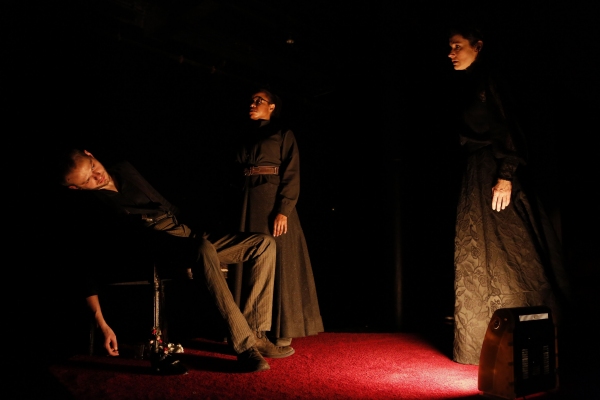The play Neva by the Chilean playwright, Guillermo Calderón, now at the Public, is a tour-de-force of theater as art. It is set on the Bloody Sunday, 22 January 1905 in Saint Petersburg, and involves three characters, Olga Knipper, the widow of Anton Chekhov, who died six month before, an actor of noble birth, Aleko, and a young actor from a lower class, Masha. The set is a modest stage in a rehearsal room, lit only by a space heater qua footlight, which is moved about now and then to create suitable expressionist shadows. The actors are there ostensibly to rehearse; but what they enact is a complex interweaving of personal, performative, and political events in the characters’ lives. Most of all, the richly layered histrionic display was spectacular, what I might summarily characterize as the art of life imitating art imitating life, as each actor and character continuously shift their performance from fiction to reality to fantasy, and back. Without a theatrical plot, it is theater close in the sense to Sergei Eisenstein’s idea of the dramatic, that is to say, not so much the narrative effect but more a simple awe and marvel that leave us speechless.
Friday, March 22, 2013
Subscribe to:
Post Comments (Atom)



No comments:
Post a Comment